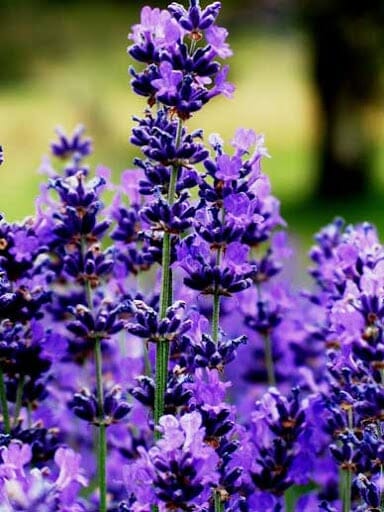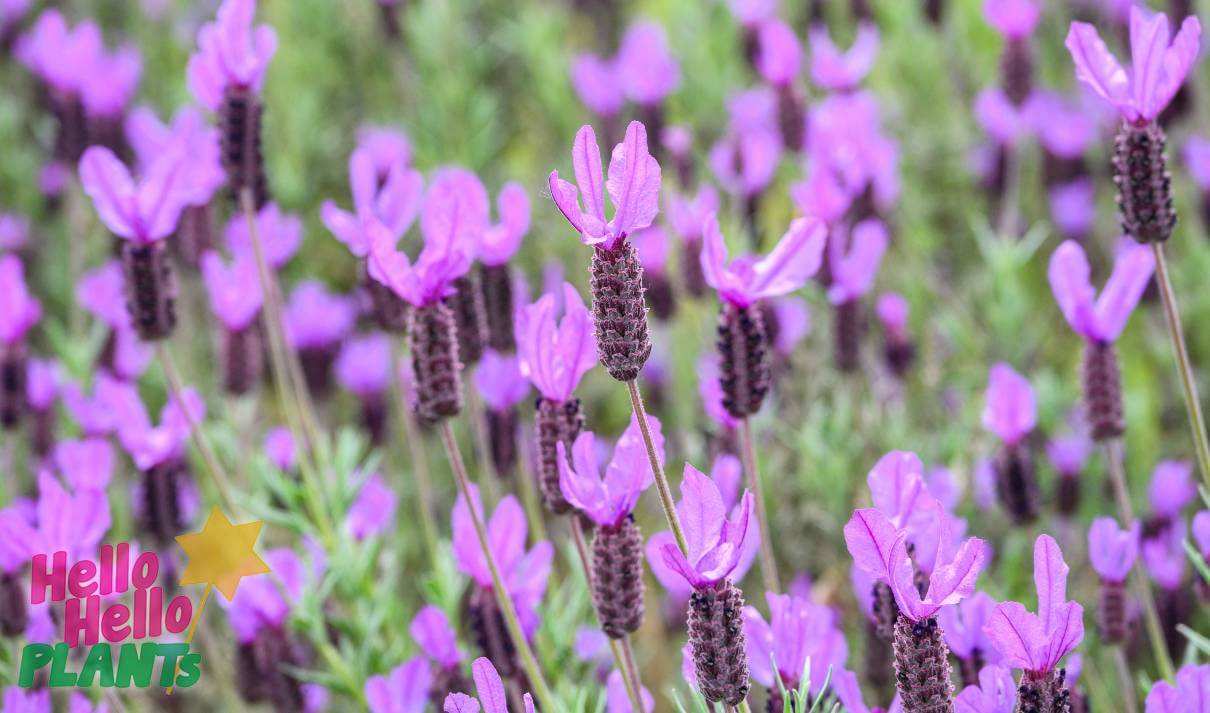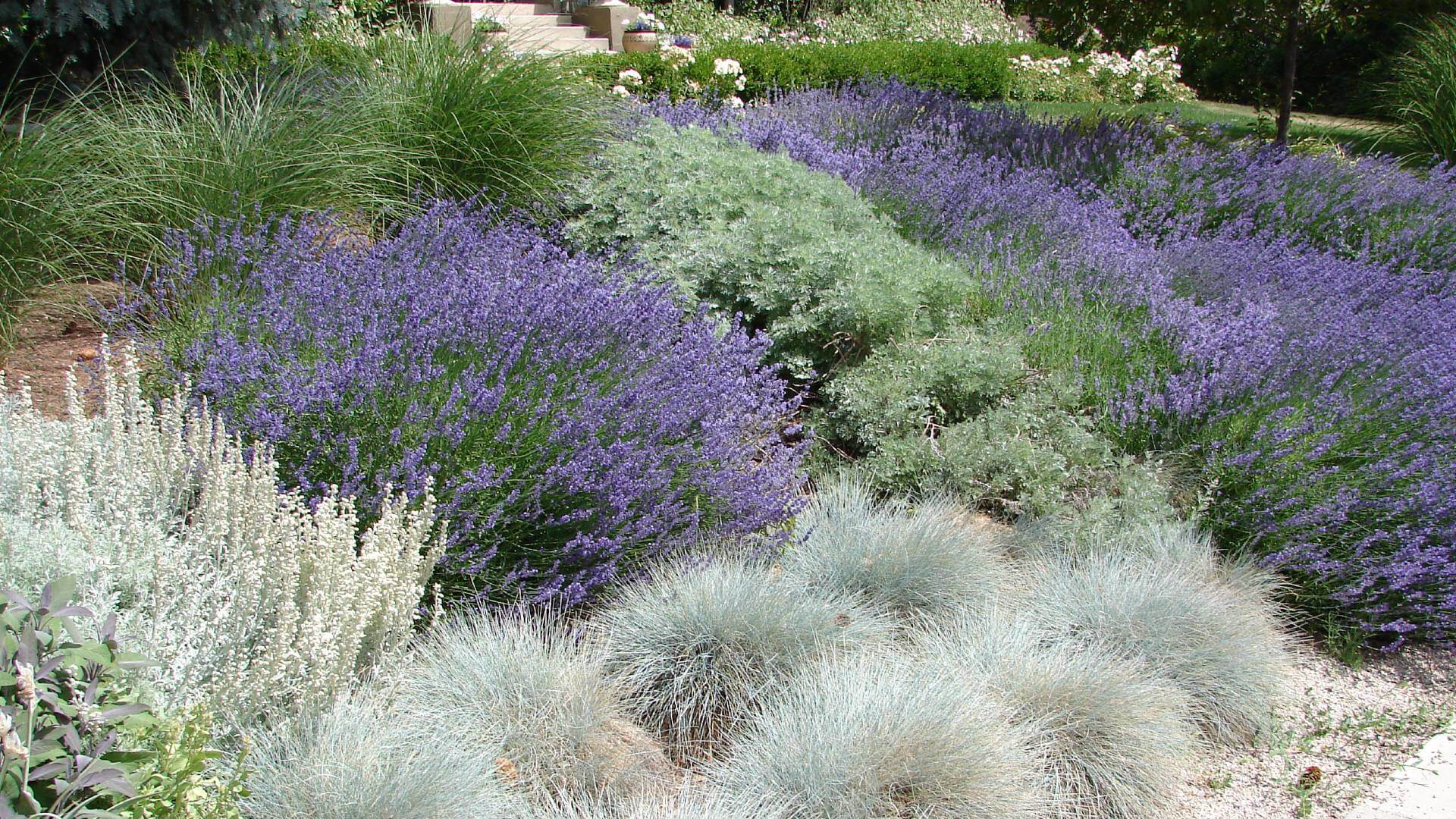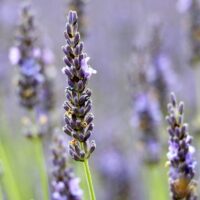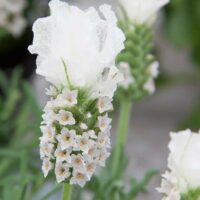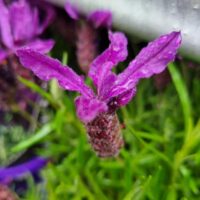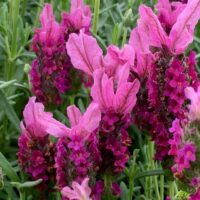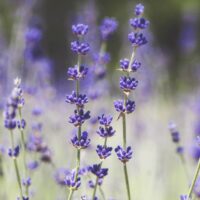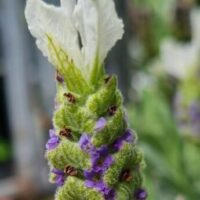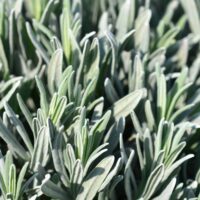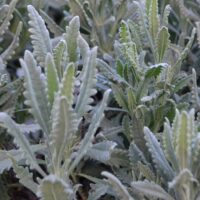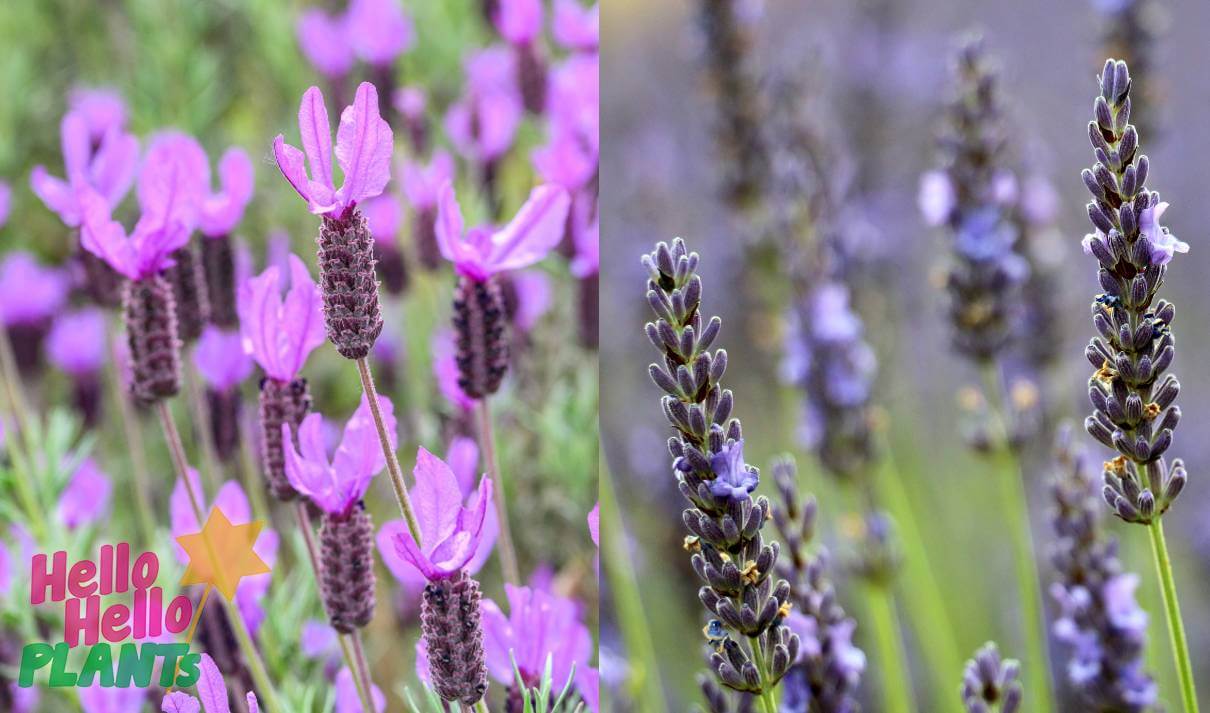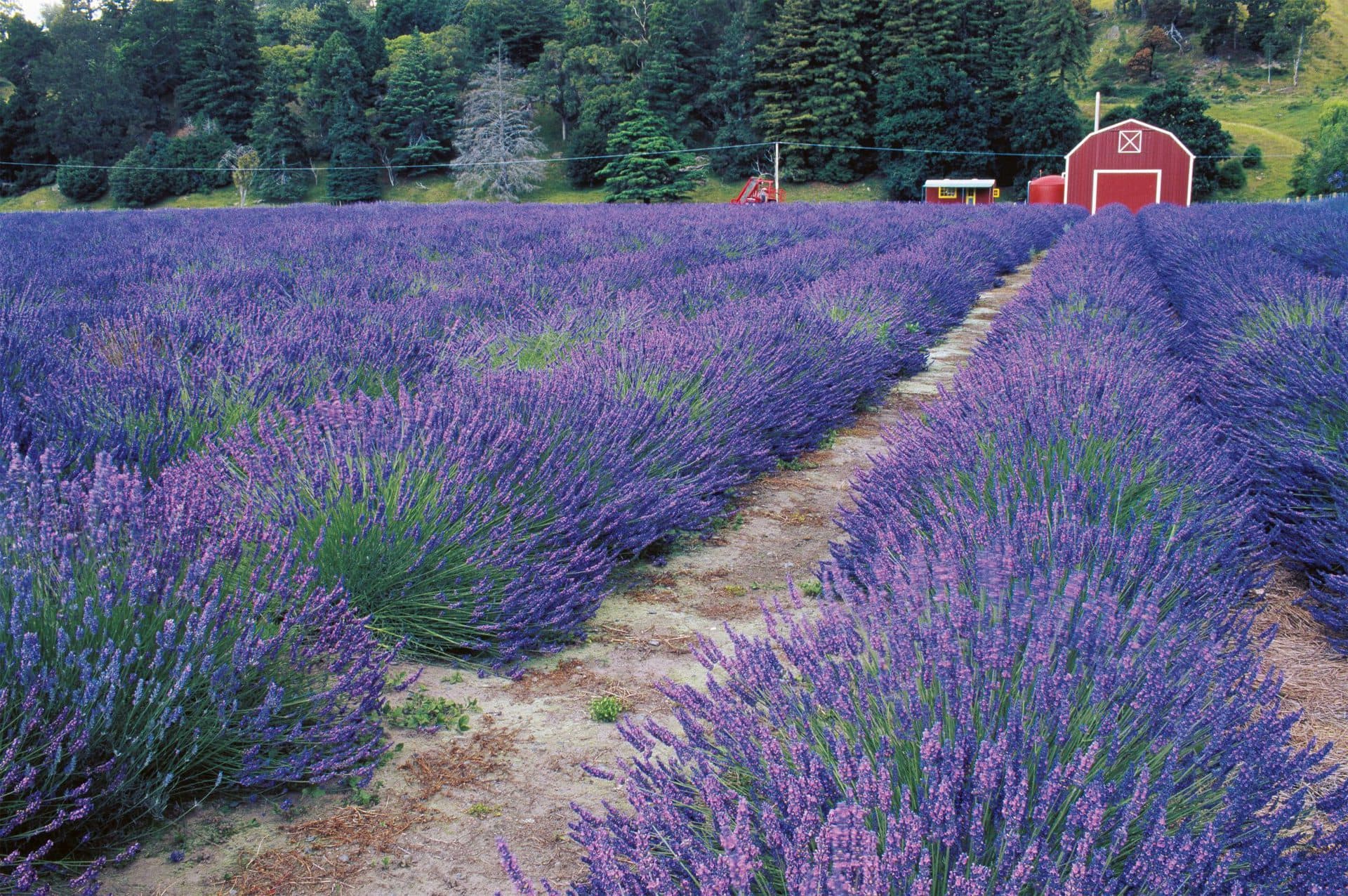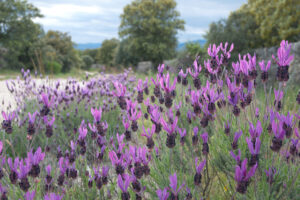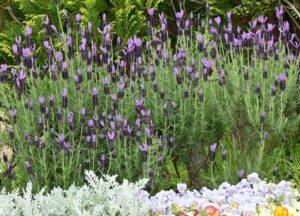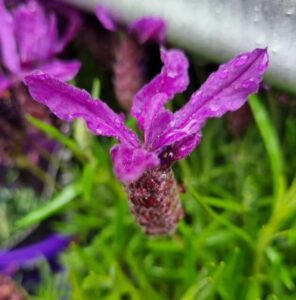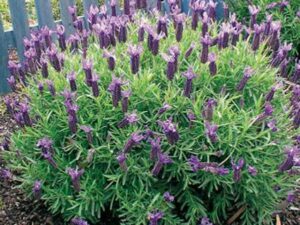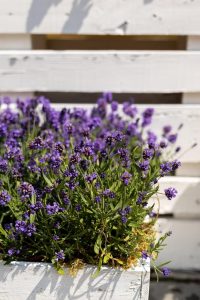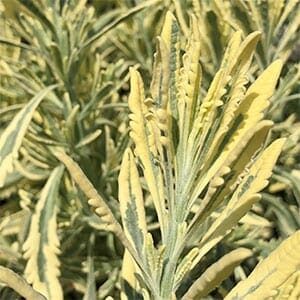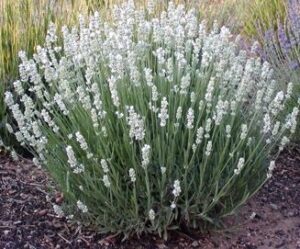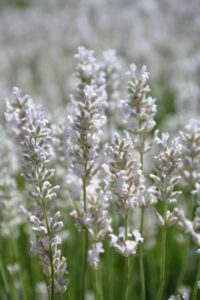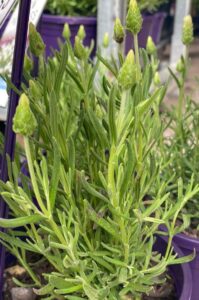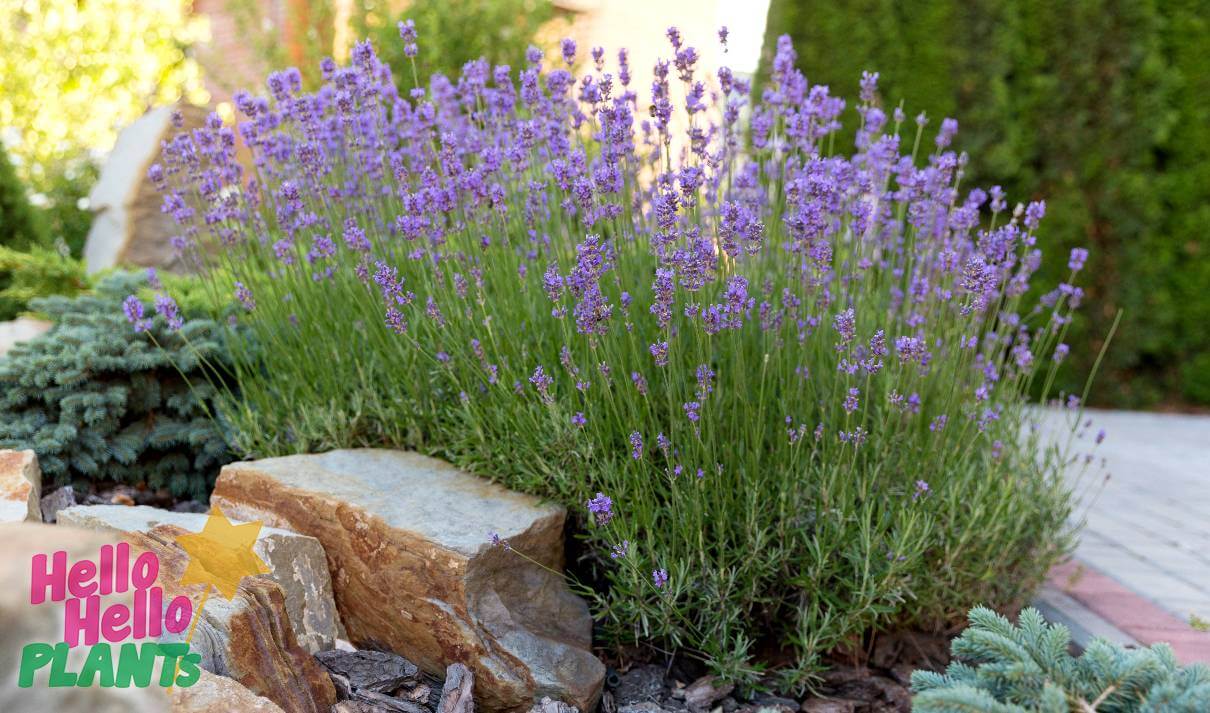A must have in the cottage garden, Lavender is a small to medium bushy shrub of the mint family with wonderfully fragrant foliage and flowers. It produces upright flower spikes above soft grey/green foliage, some varieties sporting a unique variegated foliage. This hardy shrub is highly aromatic and neat and there are many varieties with flowers ranging from blue, purple, pink to white. Lavender can be used as hedging, box hedging, in pots or as a garden filler.
Lavender is known as a therapeutic and medicinal plant. In ancient times it was used for headaches, digestive complaints, gastritis and sore throats. It is used to help aid sleep, in baths, relieves stress and has antiseptic properties.
A common question asked by our customers is what is the difference between English and French lavender. For these differences, check out our table below!
Plant Type: Shrub
Uses: Perfume, Insect Repellent, Pot Pourri, Oil, Cut Flowers, Box Hedging
Garden Types: Pots & Containers, Cottage, Modern, Hampton, Coastal
Care
Sun Requirements: Prefers a full sun. Can become woody in shaded positions or areas of low airflow
Water Requirements: Water well in the summer, provided soil is well draining. Tendency for root rot if over-watered
Soil Requirements: Prefers well drained soils but will tolerate clay, sandy, friable, lightly fertile. Acid and alkaline
Fertilizing: Slow Release general-purpose fertilizer in spring and summer.
Pruning: Regular pruning to prevent woodiness. Bushes can tend to collapse apart if stems grow too long. New, dwarf varieties avoid this.
Tolerances: Drought and heat tolerant, rocky and sandy soils, some varieties are frost tolerant
Diseases: Wood borer, generally pest resistant
Key Features
Flower: Small, tubular flowers grown in whorls atop long, square stems above the foliage. Some varieties whorls are spaced apart, others look like one dense bloom. Come in blues, purples, rose pinks to light pink, and white. Highly fragrant. Many varieties produce 4-5 petals out the top like bunny ears.
Foliage: Grey to green lacy lanceolate leaves on upright stems, some varieties variegated
Edible: No
Toxicity: No
Attracts: Bees, Butterflies
The difference between French and English Lavender
This is a very common question asked by our customers and an easy one to answer! The most common lavenders are the French (dentata) and English (angustifolia) lavenders. However there are also 3 other varieties; Portuguese (latifolia), Spanish (stoechas) and the lesser known hybrid between English and Portuguese ( x intermedia).
As for the French and English lavender, there are many, easy to tell differences between them, which we have listed below.
French (dentata) | English (angustifolia) | |
|---|---|---|
| Flower | Dense single flower, often with petals out the top Blues, purples, pinks and whites | Simple pikes with clusters or whorls of tubular flowers, sometimes with a space between each cluster Blue, purple, pink and white |
Cold | Not cold hardy | Tolerates cold climates |
Fragrance | Not as strong as English | Strongest scent, used for oils |
Flowering Time | Long flowering, from spring until autumn | Short flowering, often only in summer |
Life Span | Short | Long |
Soil | Prefers alkaline soil | Tolerates soil acidity better than French, but prefers alkaline |
Which Lavender To Choose?
With many new varieties of Lavender on the market, it can be difficult to choose which is the best suited to your garden. Below we have listed these varieties and their differences to make it easy for you to choose!
Blue
One of the most common colours and often associated with English lavender, blue lavender comes in dark to light blue. There are both dwarf and tall varieties available.
Purple
There are many vibrant purple varieties available from a deep purple to bright magenta. There are are both dwarf and tall varieties to choose from.
White
Bright white flowers in both English and French. There are are both dwarf and tall varieties to choose from.
Pink
These varieties produce a beautiful pink flower. There are are both dwarf and tall varieties to choose from.
White & Blue
These varieties have both white and blue in the same flower
Still having trouble deciding which lavender is right for your job? Check out our quick comparison chart below!
| Genus | Flower Colour | Max. Size | |
|---|---|---|---|
| Allardi | hybrid (l. dentata x l. latifolia) | Blue | 1.3m x 1m |
| Avonview | stoechas | Purple | 1m x 1m |
| Ellagance Ice | angustifolia | White | 40cm x 30cm |
| Ellagance Sky | angustifolia | Blue | 30cm x 30cm |
| Ellagance Purple | angustifolia | Purple | 40cm x 30cm |
| English | angustifolia | Blue | 1m x 50cm |
| English ‘Pink’ | angustifolia | Pink | 50cm x 50cm |
| French | dentata | Purple | 60cm x 50cm |
| French White | stoechas | White | 40cm x 30cm |
| Grosso | x intermedia | Blue | 80cm x 50cm |
| Hidcote | angustifolia | Blue | 40cm x 35cm |
| Javelin Forte ‘Deep Purple’ | stoechas | Purple | 60cm x 60cm |
| Javelin Forte ‘Deep Rose’ | stoechas | Pink | 60cm x 60cm |
| Javelin Forte ‘Deep White’ | stoechas | White & Blue | 60cm x 60cm |
| Ghostly Princess | pedunculata | Pink | 70cm x 70cm |
| Snow Princess | pedunculata | White | 60cm x 90cm |
| With Love | stoechas | Pink | 60cm x 60cm |
| The Princess | pedunculata | Pink | 70cm x 70cm |
| Meerlo | allardi | Purple | 1m x 1m |
| Munstead | angustifolia | Blue | 50cm x 60cm |
| Pacific Blue | angustifolia | Blue | 80cm x 80cm |
| Pink Queen | pedunculata | Pink | 60cm x 60cm |
| Pippa White | stoechas | White & Blue | 80cm x 70cm |
| Sensation Blue | pedunculata | Blue | 1.5m x 1m |
| Sensation Rose | pedunculata | Pink | 1.5m x1m |
| Sensation White | pedunculata | White | 1.5m x 1m |
| Silver Lining Eternity | hybrid | Pink | 60cm x 60cm |
| White | intermedia alba | White | 1.5m x 1.5m |
| Winter Purple | stoechas | Purple | 60cm x 1m |




